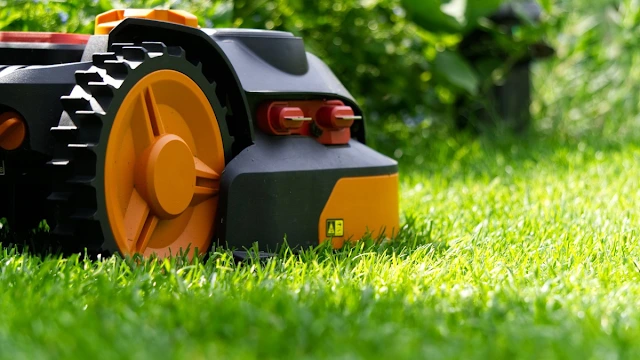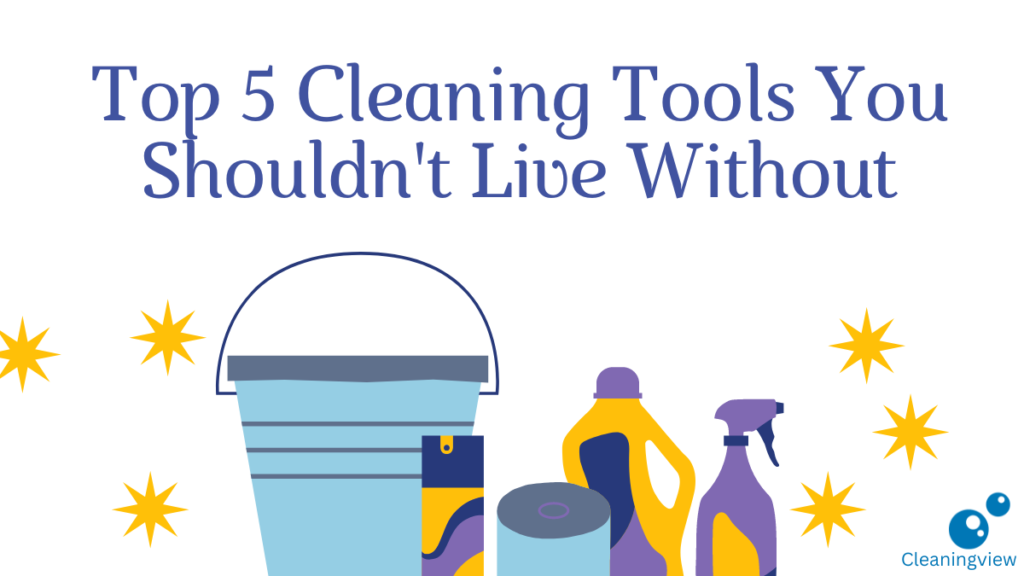
Extend the life of your electric lawn mower with our comprehensive cleaning and maintenance guide. Discover essential tips for removing grass clippings, cleaning blades, maintaining air vents, and storing your mower properly. Ensure optimal performance, prevent malfunctions, and enjoy a beautifully maintained lawn with our detailed step-by-step instructions.
Introduction
Cleaning is a crucial aspect of maintaining lawn mowers to ensure their long-term performance and reliability. In this guide, you will find essential tips and detailed steps for thoroughly cleaning your mower. Regular cleaning helps prevent the buildup of grass clippings, dirt, and debris, which can affect the mower’s efficiency and lifespan. By following these guidelines, you can keep your mower in top condition for years to come, ensuring it operates smoothly and efficiently every time you use it.
Why Regular Cleaning is Crucial
Electric lawnmowers, like any other machine, can malfunction if not properly maintained. Dirt, grass clippings, and debris can accumulate in various parts of the mower, leading to blockages and mechanical issues. Regular cleaning prevents these blockages, ensuring your mower operates smoothly and efficiently.
A well-maintained electric lawn mower can last significantly longer than one that is neglected. By regularly cleaning and maintaining your mower, you prevent wear and tear, rust, and other forms of damage. This not only saves you money on repairs but also extends the life of your investment. A clean mower performs better. Grass clippings and debris can dull the blade and clog the deck, reducing cutting efficiency. Regular cleaning keeps the blade sharp and the deck clear, ensuring a precise and clean cut every time.
Safety First: Preparing to Clean Your Mower
Before you start cleaning, ensure the mower is unplugged from the power source to avoid accidental startups. For cordless models, remove the battery. This step is crucial for your safety and prevents any electrical hazards.
Gathering Necessary Tools
Having all the necessary tools and supplies ready before you begin makes the cleaning process smoother and more efficient. You’ll need:
– A soft brush
– Cloth or sponge
– Mild detergent
– Water
– Wrench (for blade removal)
– Protective gloves
– Compressed air canister (optional)
– Rust inhibitor spray (optional)
– Silicone lubricant (optional)
Basic Cleaning Supplies You’ll Need
List of Essential Items
1. Soft Brush: For removing loose dirt and grass clippings.
2. Cloth or Sponge: For wiping down surfaces.
3. Mild Detergent: To clean the mower without damaging it.
4. Water: For rinsing (use sparingly around electrical components).
5. Wrench: Necessary for blade removal and inspection.
6. Protective Gloves: To protect your hands during cleaning.
Optional Cleaning Tools
Compressed Air Canister: Useful for blowing away dirt from hard-to-reach areas.
Rust Inhibitor Spray: Helps prevent rust formation on metal parts.
Silicone Lubricant: Keeps moving parts operating smoothly.
Step-by-Step Cleaning Guide
Removing and Cleaning the Blade
Safety Tips
Always wear protective gloves when handling the blade to avoid cuts. Make sure the mower is unplugged and the battery is removed (if applicable).
How to Properly Clean and Maintain the Blade
1. Remove the Blade: Use a wrench to carefully remove the blade.
2. Clean the Blade: Use a brush and soapy water to clean the blade thoroughly. Remove any stuck-on grass or debris.
3. Dry the Blade: Wipe the blade dry with a cloth to prevent rust.
4. Sharpen the Blade: If the blade is dull, sharpen it using a blade sharpener or take it to a professional.
5. Reattach the Blade: Once clean and dry, reattach the blade securely.
Cleaning the Deck
Removing Grass Clippings and Debris
1. Tilt the Mower: Carefully tilt the mower to access the deck (consult your user manual for the correct tilting direction).
2. Brush Off Debris: Use a brush to remove all grass clippings and debris from the deck.
3. Clean with Soapy Water: Wipe down the deck with a cloth or sponge soaked in soapy water.
4. Rinse and Dry: Rinse with a small amount of water and dry thoroughly to prevent rust.
Preventing Rust and Corrosion
Apply a rust inhibitor spray to the deck after cleaning. This helps protect the metal from rust and corrosion, especially if you live in a humid area.
Inspecting and Cleaning the Wheels
Ensuring Smooth Operation
Regularly inspect the wheels for any debris that might hinder their movement. Clean them thoroughly to ensure they rotate freely.
Removing Buildup
1. Remove Wheels (if possible): Some mowers allow you to remove the wheels for better access.
2. Clean the Axles: Use a brush to remove any dirt or grass buildup around the wheel axles.
3. Lubricate the Axles: Apply a small amount of silicone lubricant to the axles to ensure smooth operation.
Cleaning the Air Vents and Filters
Importance of Clear Vents
Air vents and filters need to be clear to prevent overheating and ensure the motor runs efficiently.
Step-by-Step Cleaning Process
1. Locate Vents and Filters: Refer to your mower’s manual to find these parts.
2. Brush Away Dirt: Use a soft brush to clean the vents and filters.
3. Wash Removable Filters: If filters are removable, wash them with soapy water and let them dry completely before reinserting.
Checking and Cleaning the Electric Components
Safeguarding the Electrical System
Avoid using water on electric components. Use a dry cloth or compressed air to clean these parts carefully. Use compressed air carefully to blow the old dirtBe gentle to avoid damaging sensitive parts.
Regular Maintenance Tips
Lubrication Tips
Regularly lubricate the moving parts of your mower to keep it running smoothly. Use silicone lubricant for best results, as it doesn’t attract dirt and debris.
Checking for Loose Parts
Periodically inspect your mower for any loose nuts, bolts, or screws and tighten them as necessary. This prevents parts from falling off or causing damage during operation.
Battery Care and Maintenance (for Cordless Models)
Keep the battery clean and store it in a cool, dry place. Charge it regularly, even in the off-season, to maintain its lifespan. Avoid completely draining the battery before charging.
Storing Your Electric Lawn Mower Properly
Keep your mower in a dry, covered area to shield it from the weather.
Preparing Your Mower for Off-Season Storage
1. Clean Thoroughly: Before storing your mower, it’s essential to thoroughly clean it. Use a brush or compressed air to remove grass clippings, dirt, and debris from the blades, undercarriage, and deck. A clean mower prevents corrosion and ensures it’s ready to go when you need it next season.
2. Remove the Battery: For cordless mowers, such as electric or battery-powered models, always remove the battery before storage. Store it in a cool, dry place away from direct sunlight and extreme temperatures to prolong its lifespan and maintain its charge capacity.
3. Drain Fuel or Use Fuel Stabilizer: If your mower uses gasoline, either drain the fuel tank completely or add a fuel stabilizer to prevent the fuel from deteriorating over time. Stale fuel can clog the carburetor and cause starting problems next season.
4. Check and Replace Oil: It’s a good practice to check the oil level and condition before storage. If the oil is dirty or old, replace it with fresh oil according to the manufacturer’s recommendations. Fresh oil helps protect the engine during storage.
5. Inspect and Tighten Parts: Inspect the mower for any loose or damaged parts, such as bolts, nuts, or belts. Tighten or replace any components as needed to ensure the mower operates safely and efficiently next season.
6. Store in a Dry, Covered Area: Choose a dry, covered area to store your mower. This helps save it from rain, snow, and direct sunlight, all of which can cause rust and deterioration. A shed, garage, or storage unit with proper ventilation is ideal.
7. Use a Mower Cover: Cover your mower with a specially designed cover or a tarp to further shield it from dust and debris. Ensure that the cover fits properly and securely to provide effective protection.
Troubleshooting Common Issues
Identifying Problems Early
Regular inspection plays a crucial role in catching potential issues early on. Take the time to inspect your mower periodically for signs of wear and tear, such as frayed belts, worn-out blades, or loose fasteners. Listen for unusual noises during operation and note any changes in performance, such as difficulty starting or uneven cutting. Addressing these issues promptly can prevent them from escalating into more significant and costly repairs down the line.
Self Repairs and Knowing When to Consult A Professional
For minor issues like tightening loose bolts, replacing a blade, or cleaning a clogged air filter, DIY maintenance can often suffice. Check your mower’s manual for specific instructions on common repairs and maintenance tasks. However, if you encounter more complex problems such as engine issues, electrical faults, or problems with the transmission, it’s advisable to seek assistance from a qualified professional.
A professional can diagnose the problem accurately, use specialized tools and equipment for repairs, and ensure that your mower is restored to optimal working conditions. Promptly addressing issues with the help of a professional not only prevents further damage but also extends the lifespan of your mower, ensuring reliable performance season after season.
Eco-Friendly Cleaning Practices
Use biodegradable and non-toxic cleaners when cleaning your mower to minimize your environmental footprint. These cleaners are just as effective as traditional ones but are safer for the environment as they break down naturally without harmful residues.
When disposing of grass clippings and other debris from your mower, opt for responsible methods. Composting is an excellent choice for organic waste like lawn clippings, as it transforms them into nutrient-rich compost for your garden. This not only reduces waste but also enriches your soil naturally, promoting healthier plants.
Conclusion
Maintaining your electric lawn mower through regular cleaning and proper storage is key to extending its life and ensuring peak performance. Follow these tips to keep your mower in excellent condition, saving you time and money in the long run.
FAQs: Tips for Cleaning Your Electric Lawn Mower
1. How Often Should I Clean My Electric Lawn Mower?
It’s best to clean your mower after every use to prevent buildup and ensure it stays in good working condition. Regular cleaning keeps your mower running smoothly and extends its lifespan.
2. Can I Use a Pressure Washer to Clean My Mower?
No, it’s not recommended to use a pressure washer as the high pressure can damage the electrical components. Stick to a gentle cleaning method with a soft brush, cloth, and soapy water.
3. What Should I Do If My Mower Doesn’t Start After Cleaning?
Make sure all the parts are tight and secure. Ensure the mower is properly plugged in or the battery is correctly installed. If it still doesn’t start, consult the user manual or seek professional help.
4. How Can I Prevent Rust on My Electric Lawn Mower?
Keep your mower dry and apply a rust inhibitor spray after cleaning. Store it in a dry place and ensure it’s thoroughly dry before storage to prevent rust formation.
5. Is It Safe to Clean the Mower’s Electrical Parts?
Yes, but avoid using water. Use a dry cloth or compressed air to clean these components carefully. Ensure the mower is unplugged and the battery is removed (if applicable) before cleaning.
Read More
https://cleaningview.ca/the-best-methods-for-cleaning-glass-and-mirrors/
Important: The information provided here in the post is for general informational purposes only. It should not be taken as professional or any other type of advice. Always seek the advice of a qualified professional before implementing this information on your own. Thank you!
Add CleaningView To Your Google News Feed


